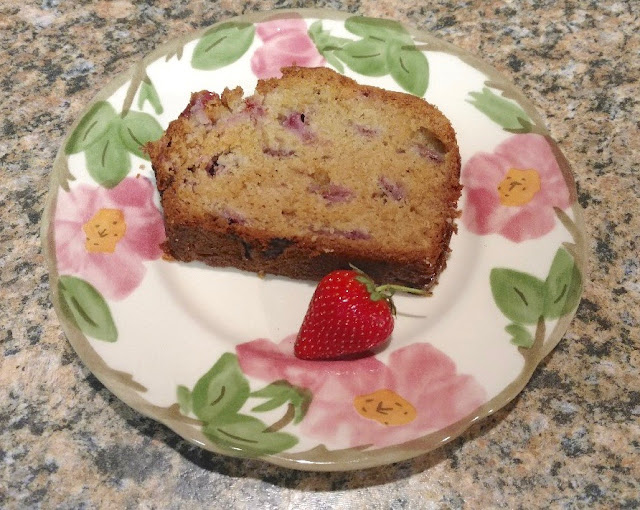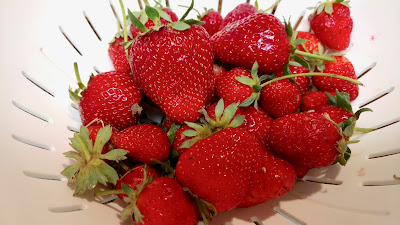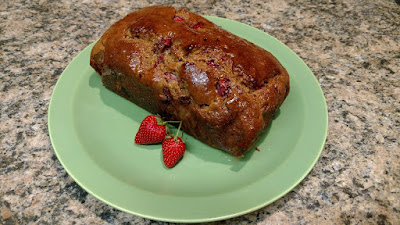
Recipe: Tea bread makes the most of small berries
 |
| Sunny strawberry bread marries berries and lemon. (Photos: Debbie Arrington) |
This delightful tea bread combines two favorite flavors of spring: Strawberries and lemon. It also makes good use of small berries.
Small berries is what I have right now. My strawberries have had a bountiful May, producing pint after pint of flavorful berries. And they just keep going.
I grow Seascape, a disease-resistant ever-bearing variety that's bright red all the way through. It can take the heat and produces berries from April through November. Besides all those pluses, the flavor is intense and very berry.
The first round of fruit is always the largest and prettiest; those berries go into shortcake or on top of tarts. In late May, the plants are pumping out little jewels -- thimble-sized berries that are just the right size to bake into bread or other treats.
This recipe is an adaptation of Nicole Routhier's strawberry-lemon bread in her excellent "Fruit Cookbook" (Workman Publishing, 1996).
Tossing the strawberries with a little flour before baking keeps the fruit suspended in the batter instead of sinking to the bottom of the loaf.
Yes, it's a lot of butter, but the result is light and moist.
 |
| Still a few large Seascape berries, but mostly small ones now. |
 |
| Strawberry bread is great for brunch, a snack or dessert. |
Comments
0 comments have been posted.Sacramento Digs Gardening to your inbox.
Food in My Back Yard Series
April 29: What's (already) wrong with my tomato plants?
April 22: Should you stock up on fertilizer? (Yes!)
April 15: Grow culinary herbs in containers
April 8: When to plant summer vegetables
April 1: Don't be fooled by these garden myths
March 25: Fertilizer tips: How to 'feed' your vegetables for healthy growth
March 18: Time to give vegetable seedlings some more space
March 11: Ways to win the fight against weeds
March 4: Potatoes from the garden
Feb. 25: Plant a fruit tree now -- for later
Feb. 18: How to squeeze more food into less space
Feb. 11: When to plant? Consider staggering your transplants
Feb. 4: Starting in seed starting
Sites We Like
Garden Checklist for week of May 4
Enjoy this spring weather – and get gardening!
* Plant, plant, plant! It’s prime planting season in the Sacramento area. Time to set out those tomato transplants along with peppers and eggplants. Pinch off any flowers on new transplants to make them concentrate on establishing roots instead of setting premature fruit.
* Direct-seed melons, cucumbers, summer squash, corn, radishes, pumpkins and annual herbs such as basil.
* Harvest cabbage, lettuce, peas and green onions.
* In the flower garden, direct-seed sunflowers, cosmos, salvia, zinnias, marigolds, celosia and asters. (You also can transplant seedlings for many of the same flowers.)
* Plant dahlia tubers. Other perennials to set out include verbena, coreopsis, coneflower and astilbe.
* Transplant petunias, marigolds and perennial flowers such as astilbe, columbine, coneflowers, coreopsis, dahlias, rudbeckia and verbena.
* Keep an eye out for slugs, snails, earwigs and aphids that want to dine on tender new growth.
* Feed summer bloomers with a balanced fertilizer.
* For continued bloom, cut off spent flowers on roses as well as other flowering plants.
* Add mulch to the garden to maintain moisture. Mulch also cuts down on weeds. But don’t let it mound around the stems or trunks of trees or shrubs. Leave about a 6-inch to 1-foot circle to avoid crown rot or other problems.